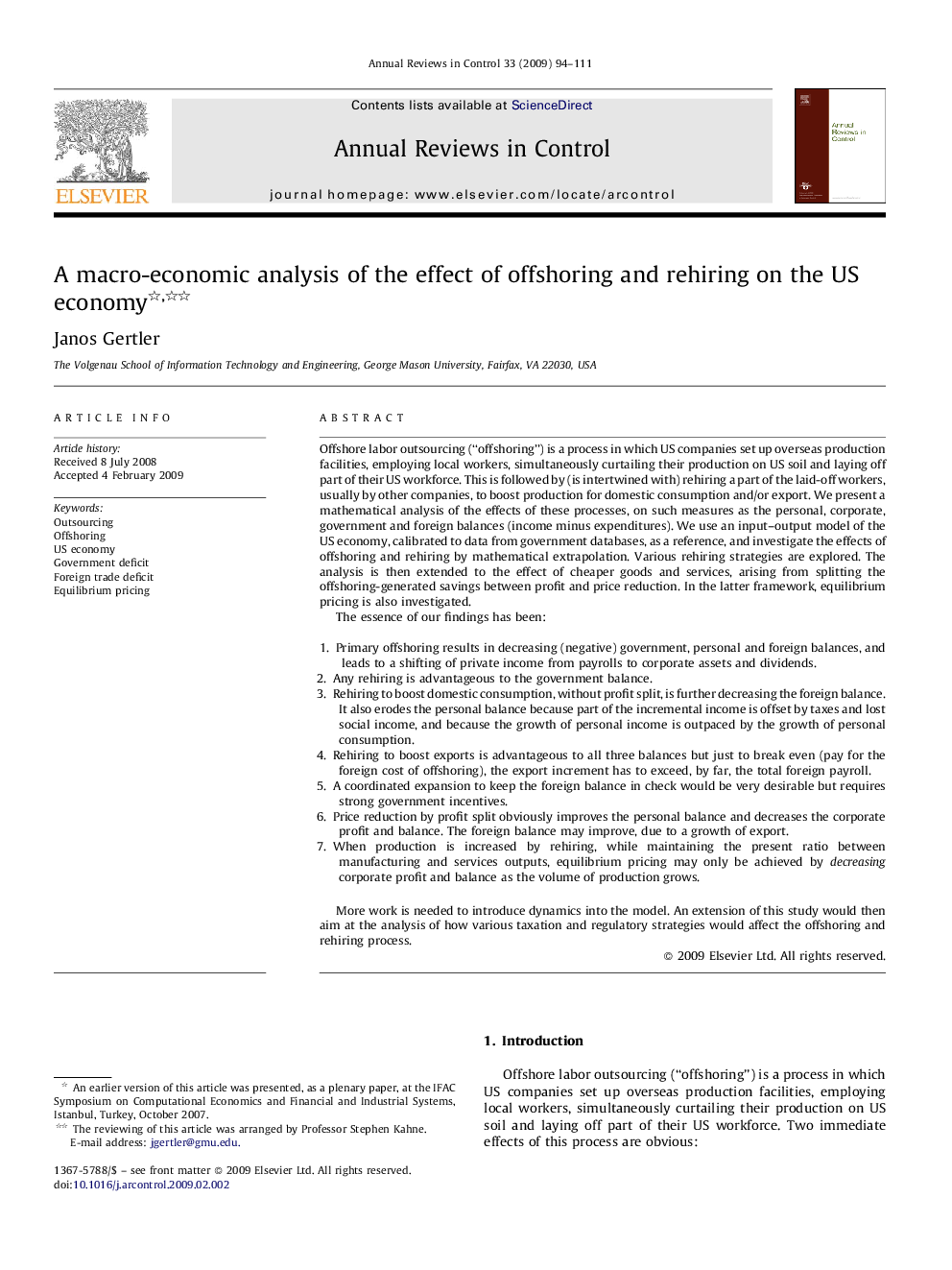| Article ID | Journal | Published Year | Pages | File Type |
|---|---|---|---|---|
| 694932 | Annual Reviews in Control | 2009 | 18 Pages |
Offshore labor outsourcing (“offshoring”) is a process in which US companies set up overseas production facilities, employing local workers, simultaneously curtailing their production on US soil and laying off part of their US workforce. This is followed by (is intertwined with) rehiring a part of the laid-off workers, usually by other companies, to boost production for domestic consumption and/or export. We present a mathematical analysis of the effects of these processes, on such measures as the personal, corporate, government and foreign balances (income minus expenditures). We use an input–output model of the US economy, calibrated to data from government databases, as a reference, and investigate the effects of offshoring and rehiring by mathematical extrapolation. Various rehiring strategies are explored. The analysis is then extended to the effect of cheaper goods and services, arising from splitting the offshoring-generated savings between profit and price reduction. In the latter framework, equilibrium pricing is also investigated.The essence of our findings has been:1.Primary offshoring results in decreasing (negative) government, personal and foreign balances, and leads to a shifting of private income from payrolls to corporate assets and dividends.2.Any rehiring is advantageous to the government balance.3.Rehiring to boost domestic consumption, without profit split, is further decreasing the foreign balance. It also erodes the personal balance because part of the incremental income is offset by taxes and lost social income, and because the growth of personal income is outpaced by the growth of personal consumption.4.Rehiring to boost exports is advantageous to all three balances but just to break even (pay for the foreign cost of offshoring), the export increment has to exceed, by far, the total foreign payroll.5.A coordinated expansion to keep the foreign balance in check would be very desirable but requires strong government incentives.6.Price reduction by profit split obviously improves the personal balance and decreases the corporate profit and balance. The foreign balance may improve, due to a growth of export.7.When production is increased by rehiring, while maintaining the present ratio between manufacturing and services outputs, equilibrium pricing may only be achieved by decreasing corporate profit and balance as the volume of production grows.More work is needed to introduce dynamics into the model. An extension of this study would then aim at the analysis of how various taxation and regulatory strategies would affect the offshoring and rehiring process.
